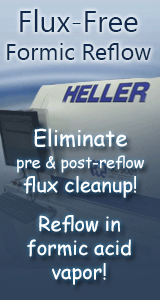Applied RF Engineering I - Circuits and Transmission Lines Online
Category: |
|
Where | When: |
|
Description: |
Based on Les Besser's famous RF course material, this program has been reworked and updated to meet the needs of today's engineers looking for online self-paced study. Video lectures are followed by our exclusive online workbooks featuring interactive problem sets and quizzes along with optional supplemental reading for those who wish to explore topics in more depth. This course is the first part of an RF Engineering Certificate program currently under development by Besser Associates. Even when working with "off the shelf" integrated radio products, engineers still need a basic understanding of circuit operation and design considerations to assure a successful product implementation and avoid unexpected pitfalls. Switching from traditional circuit definitions based on voltages and currents, to power-flow concepts and scattering parameters, this course offers engineers a smooth transition into understanding circuit operation in the RF and wireless domain. We review S-parameter measurements and applications for both single-ended (unbalanced) and balanced circuits. Impedance matching is vitally important in RF systems and we use both graphical (Smith Chart ) and analytical techniques throughout the course. We also examine discrete and monolithic component models in their physical forms, discussing parasitic effects and losses, revealing reasons why circuit elements behave in surprising manners at RF. Since wires and printed circuit conductors may behave as transmission line elements, we also cover microstrip and stripline realizations. Another important consideration is circuit layout, therefore we look at problems caused by coupling, grounding and parasitic resistance. This is a self-paced course with each student given approximately 5 months to complete the program. During that time, the student has on-demand access to the course materials at a time that is most convenient for their schedule. The course utilizes a Learning Management System, which allows students to log in and access online course material at any time, ask questions and keep track of their progress. Learning objectivesUpon completing the course you will be able to:
Target AudienceThis course is intended for students with an engineering background or equivalent practical experience. The material covered is similar to the RF Technology Certification program (part 1), but with with more in-depth numerical design examples and exercises. The course follows the proven format of the RF Technology Certification program, with video lectures followed by online workbooks. The exercises in the workbooks are expanded with more custom calculators and design work. A free open-source RF circuit simulator is employed for working on simple design examples. |
Url: |
https://www.besserassociates.com/Courses/Course-Description/CTID/270 |






